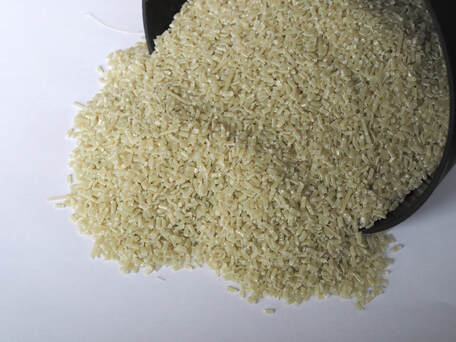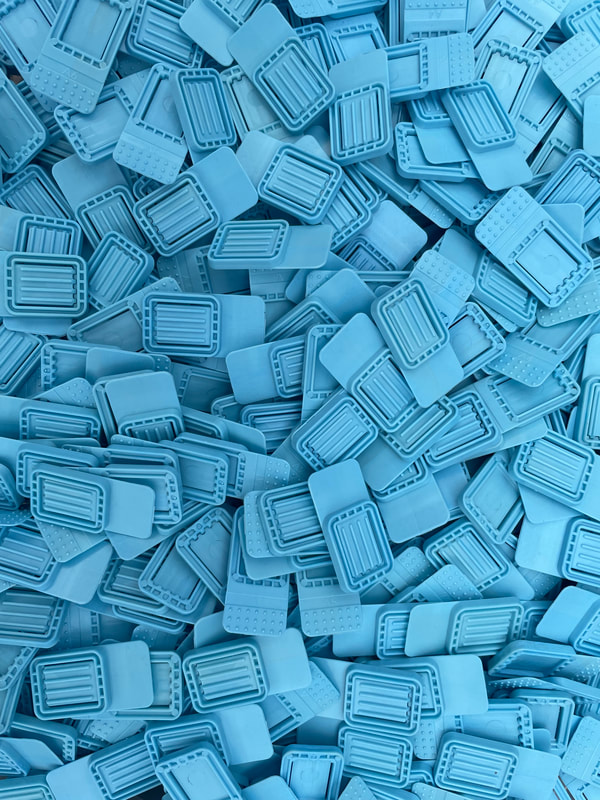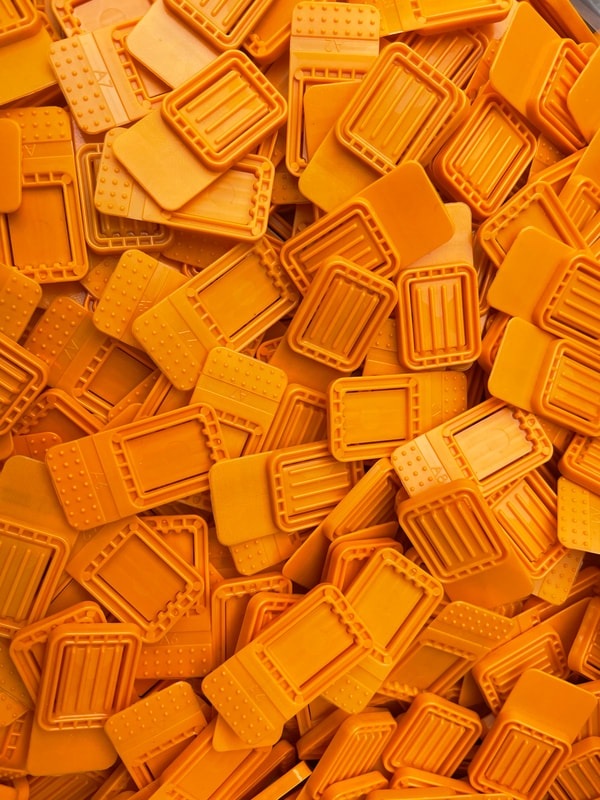Using recycled content in plastic parts is becoming increasingly important and a long term customer asked us to investigate whether this would be possible for their product. The product was a small clip that was being produced in large quantities on four of our Demag injection moulding machines. The customer produces PPE and since much of this is single use - this can create a lot of waste.
The first stage is clean waste PPE made from polypropylene is put in the same bin and collected by the customer. It is melted down into a large block and then pelletized. At Protoshape, we then receive the recycled polypropylene granules ready for processing.
The first stage is clean waste PPE made from polypropylene is put in the same bin and collected by the customer. It is melted down into a large block and then pelletized. At Protoshape, we then receive the recycled polypropylene granules ready for processing.
Changing over from virgin material with a small percentage of regranulated sprues and parts, over to stock with a high percentage of recycled materials requires a complete change to the processing conditions. We ran the tests on the smallest of the moulds, an 8-cavity cold runner mould on a 35 ton Demag machine.
The first test was simply running on 100% recycled PP to see whether it was possible because thus would be the best case scenario. The recycled material was far to viscous and would flash the mould before it filled the parts. The barrel temperatures where lowered and so too where the screw speed and back pressure to try and make the material less runny but had no success. A further problem was that the process was extremely volatile, due in fact to the inconsistent recycled material. A percentage of virgin material would have to be used to stabilize the process. Masterbatch would also have to be used to colour the parts as the recycled content was a light blue gray.
The next step was using a feed stock with 25% recycled content. It was fairly straightforward to get the parts to run efficiently and with consistent quality so the recycled content was upped to 50%. At a 50/50 split, we were on the edge of the process being inconsistent and creating problems with part quality. However, with lower temperatures all round and using Demag process control to alarm any issues the job ran nicely. Since the recycled pellets were not dark in colour, it was possible to make the parts bright orange and bright blue, as requested by the customer. This meant it was easy to make the parts look vibrant as if they were made from virgin material, unlike the dull, dark parts typically made from recycled material constrained by the dark recycled feed stock.
This is an example of a successful move towards using recycled content in our processes. Our flexibility and ability to experiment allows us to meet customer requirements quickly and effectively. After receiving the first bag of recycled pellets, we were able to send example parts the following morning.
The first test was simply running on 100% recycled PP to see whether it was possible because thus would be the best case scenario. The recycled material was far to viscous and would flash the mould before it filled the parts. The barrel temperatures where lowered and so too where the screw speed and back pressure to try and make the material less runny but had no success. A further problem was that the process was extremely volatile, due in fact to the inconsistent recycled material. A percentage of virgin material would have to be used to stabilize the process. Masterbatch would also have to be used to colour the parts as the recycled content was a light blue gray.
The next step was using a feed stock with 25% recycled content. It was fairly straightforward to get the parts to run efficiently and with consistent quality so the recycled content was upped to 50%. At a 50/50 split, we were on the edge of the process being inconsistent and creating problems with part quality. However, with lower temperatures all round and using Demag process control to alarm any issues the job ran nicely. Since the recycled pellets were not dark in colour, it was possible to make the parts bright orange and bright blue, as requested by the customer. This meant it was easy to make the parts look vibrant as if they were made from virgin material, unlike the dull, dark parts typically made from recycled material constrained by the dark recycled feed stock.
This is an example of a successful move towards using recycled content in our processes. Our flexibility and ability to experiment allows us to meet customer requirements quickly and effectively. After receiving the first bag of recycled pellets, we were able to send example parts the following morning.
Protoshape Limited, Unit 8, Preston Farm, Preston Road, Linlithgow, West Lothian, EH49 6QW
For all enquiries please contact:
[email protected]
01506 843605
Protoshape Limited, SC560045 | VAT No: 118461617 | EORI No: GB118461617000
For all enquiries please contact:
[email protected]
01506 843605
Protoshape Limited, SC560045 | VAT No: 118461617 | EORI No: GB118461617000



